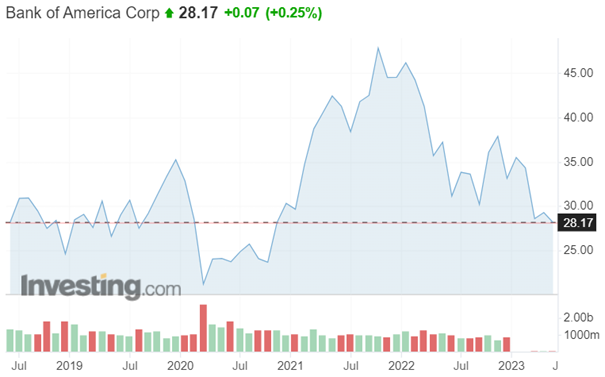Article I found on Reuters pointed out difficulties that Bank of America is facing. It said that a judge in San Diego ruled that Bank of America must face allegations from cardholders who claim the bank mishandled unauthorized transactions on unemployment and disability benefits cards in California during the pandemic. The judge allowed the proposed class action lawsuit to proceed, stating that the bank potentially violated state law by issuing cards without standard security measures and failed to investigate fraud claims or promptly freeze accounts. The ruling dismissed some claims but allowed others, including allegations that the bank violated the Electronic Fund Transfer Act, breached consumer privacy laws, and violated cardholders' constitutional rights. Bank of America had previously agreed to stop using automated fraud detection software that froze accounts. The bank did not provide immediate comment on the ruling.
Now, news like this is never good for any of the company. And add to this mix the current situation that I mentioned before, it will be an interesting time for the company in my opinion. I decided to check also their stocks, how they are evolving.
Since coming to the market in 1983, BofA managed to provide growth of 738%.* Currently the price is sitting at 28,17 USD, but this is not the highest it has been. The top was reached in 2006 and 2007, when the price for a single stock was more than 54 USD.* Solely for this reason, I have decided to keep an eye on the stock and purchase some of them when the time is right. Of course, given the situation, banking sector is rather volatile at the moment, so I think I will wait a few days and just monitor the movement.

Movement of BofA in the last five years. (Source: Investing) *
* Past performance is no guarantee of future results.








